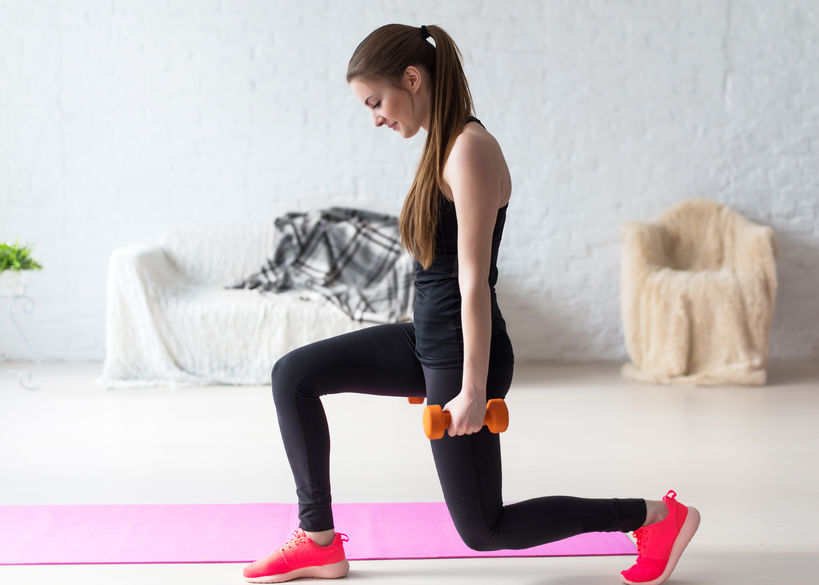HIIT Workouts at Home: The Movements
When it comes to bodyweight movements that can be done at home, there are literally dozens to choose from with even more variations. To keep it simple, we’re limiting our list here to 10 of the most common with a few variations of formats to consider. Mix and match any from the list below into one of the suggested formats making sure to work HARD on the efforts, and easy on the recovery to create your high-intensity session.
- Squats
- Squat jumps
- Squat jacks
- Lunges
- Jumping lunges
- Sprinter Lunges
- Push Ups
- Narrow or Diamond Push Ups
- Clapping push ups
- Pike Push Ups
- Burpees
- Planks
- Plank Jacks
- Star Plank
- Pull Ups (bar required)
- Jump Rope (with or without an actual rope)
- Double Unders
- Box Jumps (box or step required)
- Box Jump Overs
- Burpee Box Jumps
- Mountain Climbers
- Bicycle Crunches
How to Do HIIT Workouts
To build your perfect HIIT training session, first, determine how long you want to workout for.
According to ACSM, traditional high-intensity workouts can range anywhere from 20 to 60 minutes. It’s recommended that beginners or those new to this format plan a shorter workout while more advanced exercisers can go all out for a longer period of time.
It is very important regardless of which format you choose that you are hitting your heart rate targets on each interval. During the “work” phase of each interval, your heart rate should rocket to between 80-95 percent of your heart rate max, and stay there for the entire interval. These should be hard, and likely very uncomfortable.
Allow your heart rate to drop to between 40-50 percent of your max during your recovery phase.
Below are some of the most common formats for a high-intensity training session. Choose a few movements from the list above and give them a try in one of these formats.
Tabata
Tabata is an acronym for “we’re trying to kill you 20 seconds at a time.” Ok, not really, but it should be. It’s actually a high-intensity workout protocol created by researcher and scientist Dr. Izumi Tabata out of Tokyo. It consists of:
8 rounds
20 seconds work
10 seconds rest
Total: 4 minutes
20 seconds work
10 seconds rest
Total: 4 minutes
This protocol can be repeated over with different exercises.
Example- Tabata 1: squats, Tabata 2: push ups, Tabata 3: lunges,Tabata 4: burpees, Tabata 5: plank jacks
Or, you could do the same 5 movements consecutively for 8 rounds each.
Example- Round 1: 20 seconds on, 10 seconds rest of squats, push ups, lunges, burpees, plank jacks
Round 2: 20 seconds on, 10 seconds rest of squats, push ups, lunges, burpees, plank jacks
Continue through 8 rounds.
1:1
One of the most common high-intensity ratios is the 1:1 ratio. This means you’ll do an equal amount of work to rest. According to ACSM, the most common length for intervals at the 1:1 ratio is between 3 and 5 minutes. Remember, during that 3 to 5 minutes of work, you want to be working very hard, then during your corresponding 3 to 5 minute rest period you want to allow your heart rate to fully recover before beginning your next work period.
50-40-30-20-10
Seen commonly in CrossFit, this rep scheme is a scorcher and can deliver one heck of a high-intensity workout. Assign one movement to each block and complete the allotted number of reps. Break them up and rest as needed to work through the reps.
Want a challenge? Time yourself on the workout, allow your body to recover completely once your finished (at least equal time rest to work), and then do it again and aim to beat your time.
